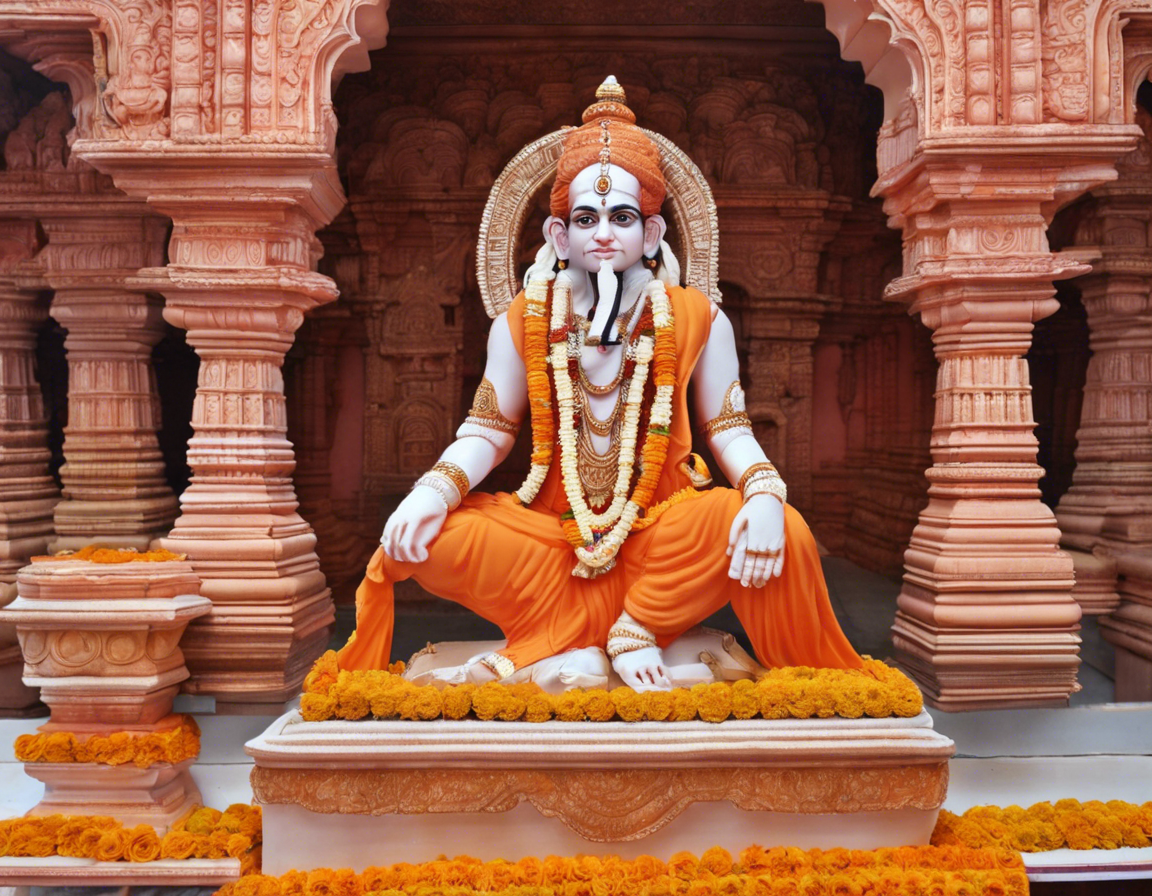The Ayodhya Ram Mandir Murti holds significance not just in its artistic appeal but also in its cultural, historical, and spiritual stature within the fabric of India. The unveiling of the grand and magnificent statue, depicting Lord Ram, marks a momentous occasion not just for religious followers but for the entire nation. Let’s delve into the various aspects of this iconic sculpture, exploring its symbolism, craftsmanship, and the emotions it evokes.
The Historical Context
The city of Ayodhya, situated in the northern state of Uttar Pradesh, holds immense historical and religious significance for Hindus worldwide. It is believed to be the birthplace of Lord Ram, a revered deity in Hinduism who is considered an embodiment of righteousness, virtue, and compassion. The Ram Mandir, a temple dedicated to Lord Ram, has been a focal point of contention and reverence for centuries, culminating in a landmark legal judgment in 2019 that paved the way for the construction of the temple at the disputed site.
Symbolism and Spiritual Significance
The Murti (statue) of Lord Ram embodies not just a deity but a symbol of ideals and values that are deeply ingrained in the Indian cultural ethos. The serene expression, the royal attire, and the poised demeanor of Lord Ram in the statue convey aspects of divinity, strength, and benevolence. For believers, the Murti serves as a tangible representation of their faith and devotion, instilling a sense of peace, reverence, and spiritual connection.
Artistic Excellence and Craftsmanship
Crafted by skilled artisans and sculptors, the Ayodhya Ram Mandir Murti is a masterpiece of artistic expression and craftsmanship. The intricate details, the lifelike features, and the grandeur of the statue reflect the dedication and precision involved in its creation. Each aspect of the sculpture, from the facial expressions to the hand gestures (mudras), is meticulously designed to capture the essence and aura of Lord Ram, making it a visual marvel and a testament to the rich artistic heritage of India.
Cultural Unity and National Integration
Beyond its religious symbolism, the unveiling of the Murti at the Ayodhya Ram Mandir symbolizes a message of unity, harmony, and cultural integration. The event has brought people from diverse backgrounds, regions, and beliefs together in celebration, highlighting the ability of shared cultural heritage to transcend differences and foster a sense of collective identity. It serves as a reminder of India’s pluralistic ethos and the idea of unity in diversity, resonating with the ethos of “Vasudhaiva Kutumbakam” (the world is one family).
Emotional Resonance and Devotional Aspect
For millions of devotees and followers of Lord Ram, the sight of the Ayodhya Ram Mandir Murti is a deeply emotional and spiritually uplifting experience. It evokes feelings of reverence, devotion, and awe, eliciting a sense of closeness to the divine presence of the deity. The act of darshan (sacred viewing) of the Murti is believed to bestow blessings, peace, and fulfillment upon the devotees, nurturing their spiritual journey and reinforcing their bond with Lord Ram.
The Legacy of Lord Ram and the Temple
The story of Lord Ram, as depicted in the epic Ramayana, is not just a mythological tale but a timeless saga of righteousness, duty, and sacrifice. The construction of the Ram Mandir at Ayodhya and the unveiling of the majestic Murti stand as a testament to the enduring legacy of Lord Ram and the enduring cultural heritage of India. It reaffirms the values of truth, justice, and dharma, inspiring generations to uphold these principles in their lives.
FAQs (Frequently Asked Questions)
Q1: What is the significance of the Ayodhya Ram Mandir Murti?
A1: The Ayodhya Ram Mandir Murti symbolizes the revered deity Lord Ram and embodies cultural, spiritual, and historical significance for Hindus. It serves as a focal point of devotion and faith for millions of followers worldwide.
Q2: Who crafted the Murti of Lord Ram at the Ayodhya Ram Mandir?
A2: Skilled artisans and sculptors, known for their expertise in traditional sculpting techniques, crafted the magnificent Murti of Lord Ram with meticulous attention to detail and artistic excellence.
Q3: What message does the unveiling of the Murti convey?
A3: The unveiling of the Murti at the Ayodhya Ram Mandir conveys a message of cultural unity, national integration, and shared heritage, emphasizing the values of harmony, diversity, and collective identity.
Q4: How does the Murti evoke emotions among devotees?
A4: The Ayodhya Ram Mandir Murti evokes feelings of devotion, reverence, and spiritual connection among devotees, offering them a sense of peace, blessings, and fulfillment during the sacred act of darshan.
Q5: What is the historical context of the Ram Mandir in Ayodhya?
A5: Ayodhya is believed to be the birthplace of Lord Ram, and the Ram Mandir holds significance due to its association with the deity’s life and the long-standing historical and religious beliefs of Hindus.
In conclusion, the unveiling of the Ayodhya Ram Mandir Murti transcends its physical form to become a symbol of faith, unity, and cultural resurgence in India. It represents not just a deity but a source of inspiration, devotion, and collective celebration, weaving together the threads of history, spirituality, and artistry in a tapestry of cultural vibrancy and national pride.
